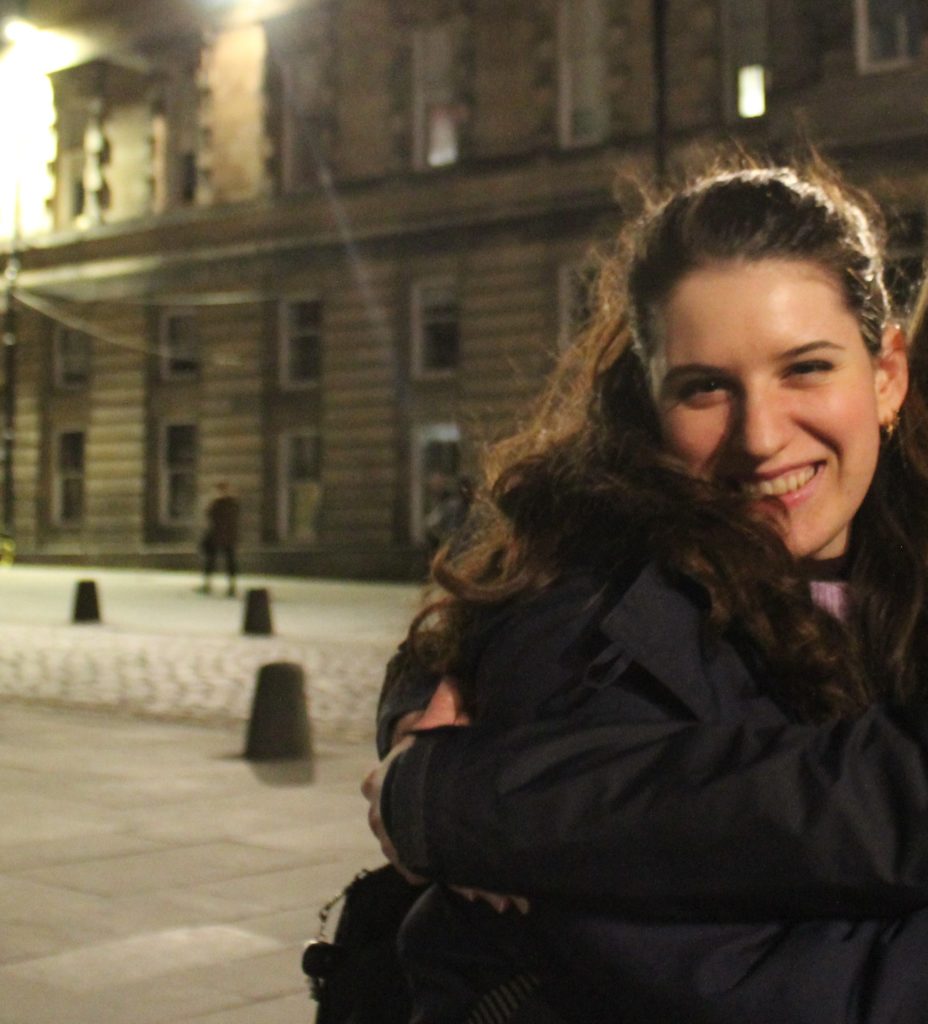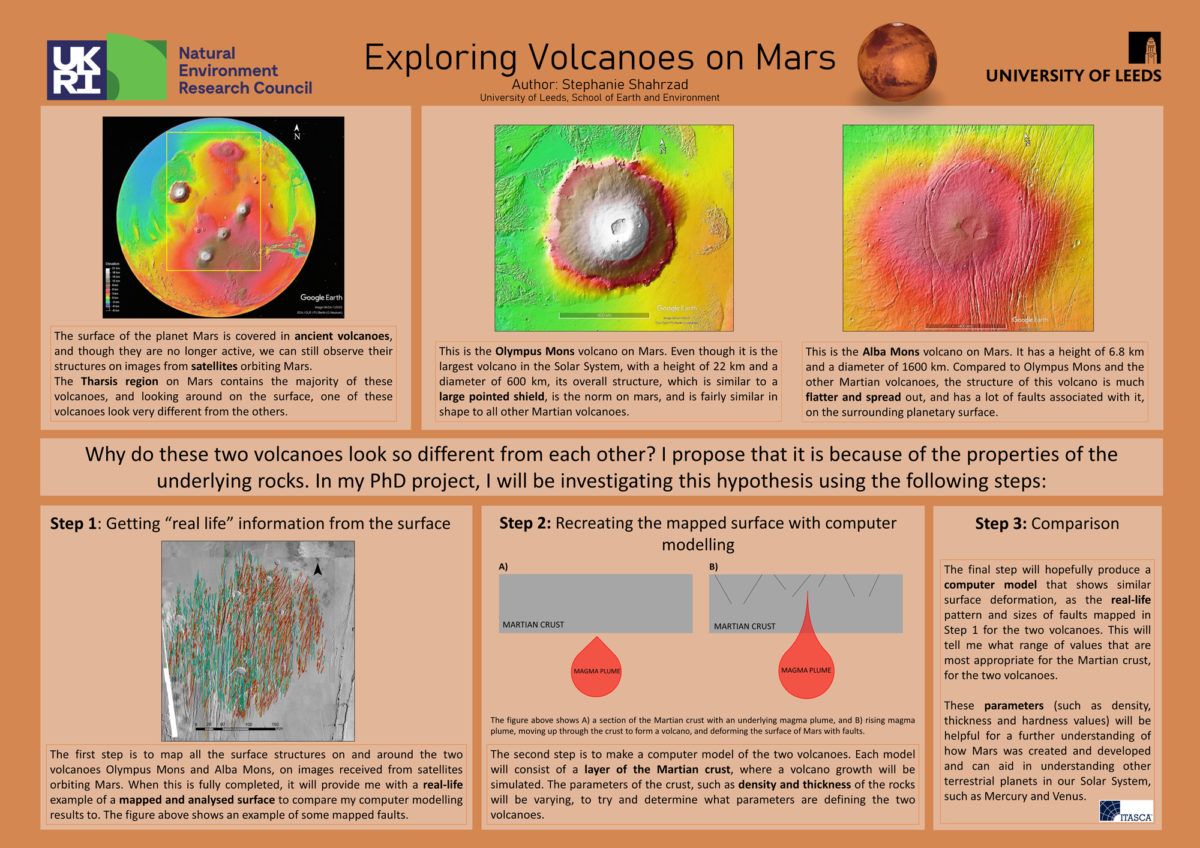Summary
This poster is aimed at high-school and first-year undergraduate students and attempts to explain the research question and methods of my PhD project, without using terms and concepts that are too technical. Hopefully this will inspire students who are interested in a future in the planetary sciences.
Transcript
The surface of the planet Mars is covered in ancient volcanoes, and though they are no longer active, we can still observe their structures on images from satellites orbiting Mars.
The Tharsis region on Mars contains the majority of these volcanoes, and looking around on the surface, one of these volcanoes look very different from the others.
The Olympus Mons volcano on Mars is the largest volcano in the Solar System, with a height of 22 km and a diameter of 600 km, its overall structure, which is similar to a large pointed shield, is the norm on mars, and is fairly similar in shape to all other Martian volcanoes.
The Alba Mons volcano on Mars has a height of 6.8 km and a diameter of 1600 km. Compared to Olympus Mons and the other Martian volcanoes, the structure of this volcano is much flatter and spread out, and has a lot of faults associated with it, on the surrounding planetary surface.
Why do these two volcanoes look so different from each other? I propose that it is because of the properties of the underlying rocks. In my PhD project, I will be investigating this hypothesis using the following steps:
Step 1:
The first step is to map all the surface structures on and around the two volcanoes Olympus Mons and Alba Mons, on images received from satellites orbiting Mars. When this is fully completed, it will provide me with a real-life example of a mapped and analysed surface to compare my computer modelling results to. The figure above shows an example of some mapped faults.
Step 2:
Figure text:
The figure above shows A) a section of the Martian crust with an underlying magma plume, and B) rising magma plume, moving up through the crust to form a volcano, and deforming the surface of Mars with faults.
Main text:
The second step is to make a computer model of the two volcanoes. Each model will consist of a layer of the Martian crust, where a volcano growth will be simulated. The parameters of the crust, such as density and thickness of the rocks will be varying, to try and determine what parameters are defining the two volcanoes.
Step 3:
The final step will hopefully produce a computer model that shows similar surface deformation, as the real-life pattern and sizes of faults mapped in Step 1 for the two volcanoes. This will tell me what range of values that are most appropriate for the Martian crust, for the two volcanoes.
These parameters (such as density, thickness and hardness values) will be helpful for a further understanding of how Mars was created and developed and can aid in understanding other terrestrial planets in our Solar System, such as Mercury and Venus.
Stephanie Shahrzad

Stephanie completed her BSc in Geology-Geoscience and MSc in Geochemistry and Solid Earth Petrology at the University of Copenhagen in Denmark, where she is from. Stephanie is currently a PhD student at the University of Leeds, where she is studying lithospheric properties and volcanic structures on Mars. Her research aims to combine mapping, numerical modelling and analogue field-measurements from Iceland to further the understanding of large-scale geological processes on Mars.
Email: eessha@leeds.ac.uk
Organisation: University of Leeds

